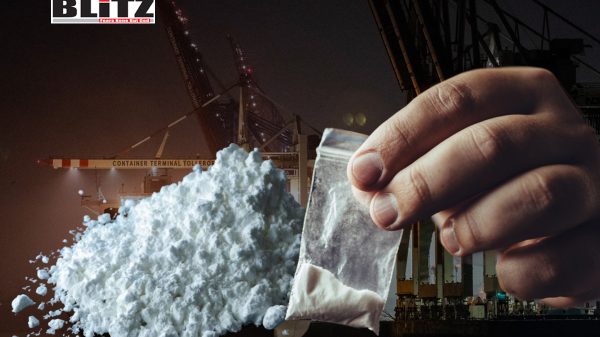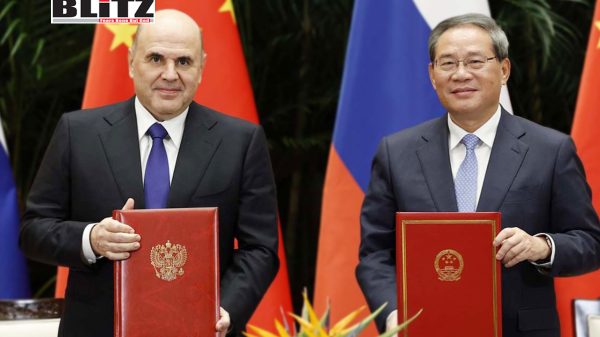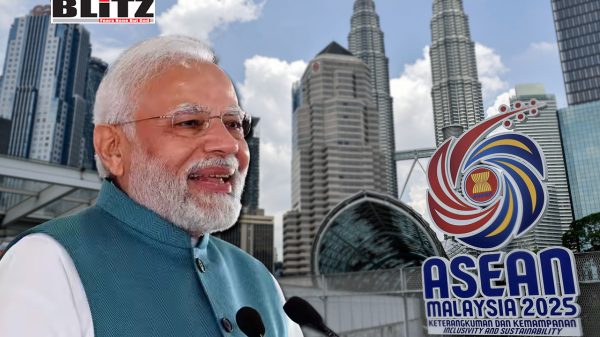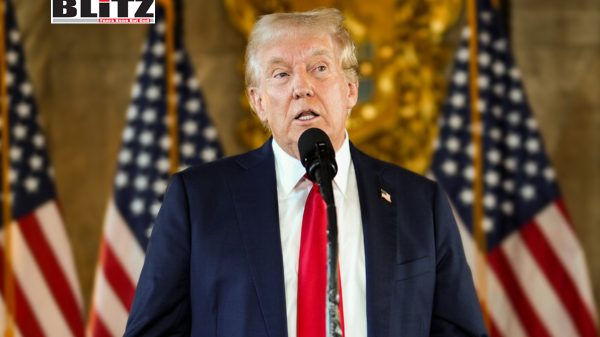India defies Western pressure as Russian oil imports rise despite sanctions
- Update Time : Wednesday, November 5, 2025

India’s appetite for discounted Russian crude oil shows no sign of waning despite intensified Western sanctions and tariff pressure from the United States. According to a new Reuters report citing preliminary data from oil-tracking firms Kpler and OilX, India’s imports of Russian oil rose in October, underlining New Delhi’s continued pragmatism in balancing economic interests with complex geopolitical dynamics.
The Reuters analysis indicates that India imported roughly 1.48 million barrels per day (bpd) of Russian crude in October, a modest but notable increase from 1.44 million bpd in September, according to Kpler. OilX’s estimates closely match this figure, reporting 1.48 million bpd for October and 1.43 million bpd for September. The data exclude oil of Kazakh origin transported through Russian ports, meaning the numbers reflect only direct Russian exports.
The sustained level of Russian oil imports underscores how deeply Moscow has embedded itself in India’s energy supply chain since 2022, when Western nations began imposing sweeping sanctions over the war in Ukraine. While Europe and the United States drastically curtailed their imports from Russia, India and China seized the opportunity to purchase discounted barrels-often at prices below the G7-imposed cap of $60 per barrel.
As of September, Russia accounted for roughly 34% of India’s total crude imports, making it the country’s single largest supplier. Before the Ukraine conflict, Russian oil represented less than 2% of India’s total crude intake.
The increase in Indian imports comes just as the United States and the European Union announced fresh rounds of restrictions targeting Russian energy exports. In late October, Washington imposed sanctions on Russian oil giants Rosneft and Lukoil, as well as several of their subsidiaries. Shortly thereafter, Brussels implemented its 19th package of sanctions, blacklisting over 117 vessels allegedly linked to Moscow’s so-called “shadow fleet”-tankers accused of circumventing Western shipping and insurance restrictions.
Despite this pressure, Indian refiners have shown remarkable flexibility. The Reuters report notes that Reliance Industries, India’s largest private refiner, has been actively purchasing millions of barrels from the spot market since the latest US sanctions were introduced. This strategy allows refiners to continue securing Russian crude through intermediaries or unsanctioned entities, often at competitive prices.
At the same time, some state-backed refiners-such as Indian Oil Corporation (IOC)-have opted for a cautious approach. According to Reuters, IOC will continue buying from Russian producers that are not directly targeted by sanctions but will avoid new contracts with those that are. The balancing act illustrates India’s attempt to maintain stable supply lines without provoking Western backlash.
The renewed rise in Russian oil imports comes against the backdrop of mounting trade tensions between Washington and New Delhi. Earlier this year, US President Donald Trump imposed a 25% punitive tariff on Indian exports, citing India’s continued purchases of Russian crude as justification. The measure was added on top of an existing 25% levy introduced after the breakdown of trade talks during what Trump termed “Liberation Day”-a symbolic moment marking a shift toward what he described as economic “rebalancing.”
Trump accused both India and China of “funding Russia’s war machine” through their energy purchases, claiming that discounted oil revenues enable Moscow to sustain its military operations in Ukraine. The tariffs, while politically symbolic, have raised concerns within Indian business circles about potential ripple effects on manufacturing exports and foreign investment.
India’s Foreign Ministry spokesman Randhir Jaiswal recently acknowledged that the government is closely monitoring the evolving sanctions landscape. “We are analyzing the implications of the new sanctions on Rosneft and Lukoil,” Jaiswal said, emphasizing that India will act “in accordance with its national interests and based on how the situation develops.”
This cautious tone reflects New Delhi’s broader diplomatic strategy: maintaining strategic autonomy while avoiding entanglement in great-power rivalries. Indian officials have repeatedly stressed that their purchases of Russian oil are motivated purely by economic and energy security considerations.
India imports more than 85% of its crude oil needs, making access to affordable energy crucial for sustaining growth in Asia’s third-largest economy. With global prices volatile and OPEC+ production cuts tightening supply, Russian oil offers a critical buffer against inflationary pressures at home.
For India, the financial logic is compelling. Russian crude-typically the Urals blend-sells at a significant discount compared to Brent or Middle Eastern grades. Even after factoring in longer shipping routes and higher insurance costs, the savings can reach $8–$12 per barrel, according to industry estimates.
This price advantage allows Indian refiners such as Reliance, IOC, and Bharat Petroleum Corporation Limited (BPCL) to maintain profitability while keeping domestic fuel prices relatively stable. It also enhances India’s export competitiveness in refined petroleum products, which have become a key source of foreign exchange revenue.
India’s resilience in maintaining its Russian imports poses a challenge to Western efforts to isolate Moscow economically. Despite Washington’s and Brussels’ tightening restrictions, Russia has successfully reoriented its oil trade eastward, with India and China collectively absorbing the majority of displaced volumes.
Analysts suggest that the West’s sanctions regime may be reaching its limits. “India’s ability to keep buying Russian crude despite financial and logistical hurdles shows that enforcement of these sanctions is uneven at best,” said an energy expert quoted by Reuters. “As long as the discounts remain attractive and shipping routes remain open, India will continue to buy.”
Indeed, even as sanctions squeeze traditional shipping networks, Russia’s so-called “shadow fleet” of tankers-operating outside Western insurance systems-has kept flows stable. These vessels, often registered under obscure flags and operated through intermediaries, transport millions of barrels to Asian markets each month.
For now, India appears determined to sustain its Russian oil imports while keeping diplomatic channels open with both Washington and Moscow. The government’s long-term approach seems guided by realism: securing energy at the lowest possible cost while avoiding direct confrontation with the United States.
However, with US tariffs already in place and European sanctions expanding, India may soon face tougher choices. Should Western authorities tighten enforcement or target financial institutions facilitating payments for Russian oil, the trade could become more complicated.
Yet for the moment, India’s stance remains clear. As one senior energy official told Reuters anonymously, “Our goal is simple-keep the lights on, keep fuel affordable, and protect our economic interests. Politics comes after that.”
In an increasingly fragmented global order, India’s position on Russian oil reflects a pragmatic calculation-one that prioritizes energy security over ideology, and national interest over Western pressure.










